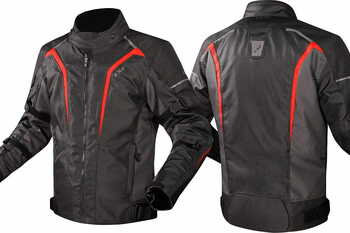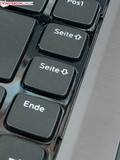sagar test 02
Description
| ||||||||||||||
| ||||||||||||||
| ||||||||||||||
| ||||||||||||||
| ||||||||||||||
| ||||||||||||||
| ||||||||||||||
| ||||||||||||||
| ||||||||||||||
| ||||||||||||||
| ||||||||||||||
| ||||||||||||||
| ||||||||||||||
| ||||||||||||||
| ||||||||||||||
Â
Review Dell Latitude 3440 Notebook
An asocial office playboy. Dell presents the successor of its Vostro 3460 as an affordable office notebook in a snazzy aluminum body. The dedicated graphics also make the test version interesting for gaming with friends. So much is clear from the beginning: The balancing act succeeds, with only its mobility and endowment of ports failing to convince.

For the original German review, see here.
Dell wants to situate its Latitude 3440, successor to the Vostro 3460 (which we also recently tested), as an economical office notebook; as with other models, it offers various configurations. Apart from the Intel Core i5-4200U (dual-core, 1.6 GHz base clock, up to 2.6 GHz Turbo clock) in the model we tested, an i3-2317U-CPU is also available as a configuration.
In the machine's specs, Dell offers additional Haswell configurations as options: the i3-4010U (dual-core, 1.7 GHz) as well as the i5-4300U (dual-core, 1.9 GHz, up to 2.9 GHz Turbo clock). However, corresponding models were not available in the German online shop at test time. The RAM endowments vary between 2 and 8 GB.
As for an operating system, the user can choose between Windows 8 Pro, Windows 7 Home Premium, Windows 7 Professional (with Windows 8 64-bit license) and Ubuntu 12.04 Long Term Support (LTS) SP1. As far as storage devices, there are no SSDs offered, but instead hard drives with capacities ranging from 320 GB to 1 TB. The on-chip GPU Intel HD 4400 or the optional middle-class GPU Nvidia GeForce GT 740M, take care of graphics processing.
For the sake of clarity, we should also note that at test time, not all possible combinations were available over the corresponding Dell sites. The sale prices (!) on 11/26/2013 were 479 Euros for the least pricey option (~$655) up to 669 Euros for the test product (~$915) - these prices are really nothing to sneeze at!
As comparison models, we gathered the HP ProBook 430-G1 as well as the office classic HP ProBook 6475b for this test. While the former notebook is likewise fitted with the Core i5-4200U and otherwise similarly equipped (apart from an absent dedicated graphics system), the 6475b relies on the AMD-CPU A6-4400M with Radeon HD 7520G graphics core.Â
All three devices have a matte 14-inch monitor.
Monolithic and unadorned, somewhat heavy, but still not inelegant and with numerous curves - this is more or less how we would describe the impression that the creator of the Latitude 3440's impeccably crafted case has earned. It consists mostly of plastic, which is smoothly concealed through the aluminum surfaces in a brushed metal look on the back of the lid and the upper surface of the chassis. Still, it makes an impression of solidity. The base's underside seems like polycarbonate and is lightly textured for improved grip.
It takes a lot of strength to twist the base; pressure on the back of the lid produces image faults on the front, which (interestingly) do not show up where one presses. The hinges are designed so that the user can open the machine with one hand, without lifting the base. Dell has also succeeded, more or less, in preventing backward swinging - travelers will be thankful. Annoying: the eject button for the DVD tray is very difficult to press.
The metal upper surfaces are not quite insensitive to fingerprints. Since these are less and less noticeable after longer use, one need not be too zealous to constantly clean them.
Dell's variety of ports leaves something to be desired. Even though the machine is actually conceptualized as an office notebook, the absence of an HDMI port is always annoying and works somewhat against the alternative use as a multimedia machine, for which enough processing power is actually available. Neither a docking port nor the option to use UMTS/LTE or a DisplayPort is offered. At least there are the VGA and Ethernet ports, which are important in the office realm.
Bringing most of the ports to the front drags the usual ergonomic disadvantages with them: Cables and plugged-in devices like USB sticks could (for example) disrupt the use of an external mouse.
Communication
The communications module trades under the name of Dell Wireless 1705, transmits over IEEE 802.11b/g/n and integrates Bluetooth 4.0 and HS. WLAN and Bluetooth can only be activated and deactivated together via a keyboard shortcut (Fn). Bluetooth music playback via smartphone over the notebook loudspeakers worked without interruption even through a brick wall and over a distance of ten meters (~33 feet). In comparison, we evaluated the reception qualities of the WLAN modules as merely average. In the author's individual test setup, download rates showed more marked fluctuations at a distance of about eight meters (~26 feet) through two brick walls than when directly adjacent to the router. When the tester placed himself downstairs under the router, the connection was broken at a moderate distance - many devices manage more, though many do less. It is unfortunate that the Latitude only uses the oft-frequented 2.4-GHz band, which could especially be a problem in office buildings.Â
Accessories
Apart from the notebook and the power cord, the package contains only operating instructions, a CD with webcam software, and a Recovery Medium for Windows 8. Dell offers an optional docking station, which consists only of a USB port replicator.Â
Â
Maintenance
Almost ideal: The maintenance panel, secured with one screw, offers access to HDD, WLAN module and storage devices, but not to the fan.
Warranty
Dell includes one year of ProSupport and next business day on-site service. Upgrades are also possible. Users can find details here.
Keyboard
With the unilluminated keyboard, we see already that Dell has not reached too high on the shelf. Two negative details stand out: On the edges, there is a narrow gap in the case, in which dust and dirt will inevitably gather over time. Apart from this, Dell decided on a glossy black keyboard bed, which attracts fingerprints but is laborious to clean. With strong pressure, the keyboard has a bit of give (especially in the upper middle area), but this is not relevant in practice.
A number keypad is absent, and the layout differs from the standard especially on the right side. In our test machine, some keys that one often finds to the right have slid over to the side, which one has to get used to. The pause key has fallen by the wayside altogether.
The other characteristics of the keyboard allow comfortable use: The key upstroke is sufficient, and the pressure point is easy to feel. There is no excessive clacking. The keys are completely even and lightly textured.
Â
Touchpad
The mouse replacement is sufficiently large, is no longer excessively sensitive at the edges, and has a very well textured upper surface, which particularly pleased this author. Both keys are set physically apart and offer the tester optimal, moderately strong resistance and moderate haptic feedback. Gesture freaks will be overjoyed that the touchpad recognizes four fingers simultaneously and can be configured in detail.
The candidate's monitor, perhaps optimally for a 14-inch model even though it is unfortunately encountered far too seldom, has a resolution of 1600x900 pixels (131 ppi) in - who would have thought? - 16:9 format at its disposal. The upper surface is anti-glare, which is appropriate for office use. Buyers usually search in vain for especially stable viewing angles among IPS panels in the 800-Euro (~$1100) price segment, and consequently the test machine has a TN panel with LED illumination. Alternatively, Dell offers a similarly matte TN display that yields a resolution of only 1366x768 pixels at 112 ppi.
The Dell Latitude 3440 is, at an impressive 342 cd/m², one of the brightest office notebooks that we have tested; the Schenker XIRIOS B502, at 387 cd/m², marks the apex of the field.
| |||||||||||||||||||||||||
Brightness Distribution:Â 86 %
Center on Battery: 338 cd/m²
Contrast: 438:1 (Black: 0.78 cd/m²)
ΔE Color 8.96 | - Ø
ΔE Greyscale 9.64 | - Ø
38.34% AdobeRGB 1998 (Argyll)Â
Gamma: 2.26
The flipside of the coin: a moderate black level of 0.78, which places it in the bottom third of the comparison and, subjectively, does not allow any deep black. The contrast, at 438:1, is rather underwhelming. Screen bleeding is no problem, and the illumination suffices. The display delivers a very sharp image.
The color variance lies almost exactly in the average of this class and shows a noticeable blue tint in its results, which yields a somewhat warmer overall impression after calibration. The color mask - only relevant for image editing professionals - is just as average.
Details
- Type: cotton
- Brand: gucci
- Material: pure
- SKU: Acer Aspire 3 A314-22
Opps
Sorry, it looks like some products are not available in selected quantity.














